London gets team of firefighting robots
QinetiQ has demonstrated a team of firefighting robots to help out in Greater London.

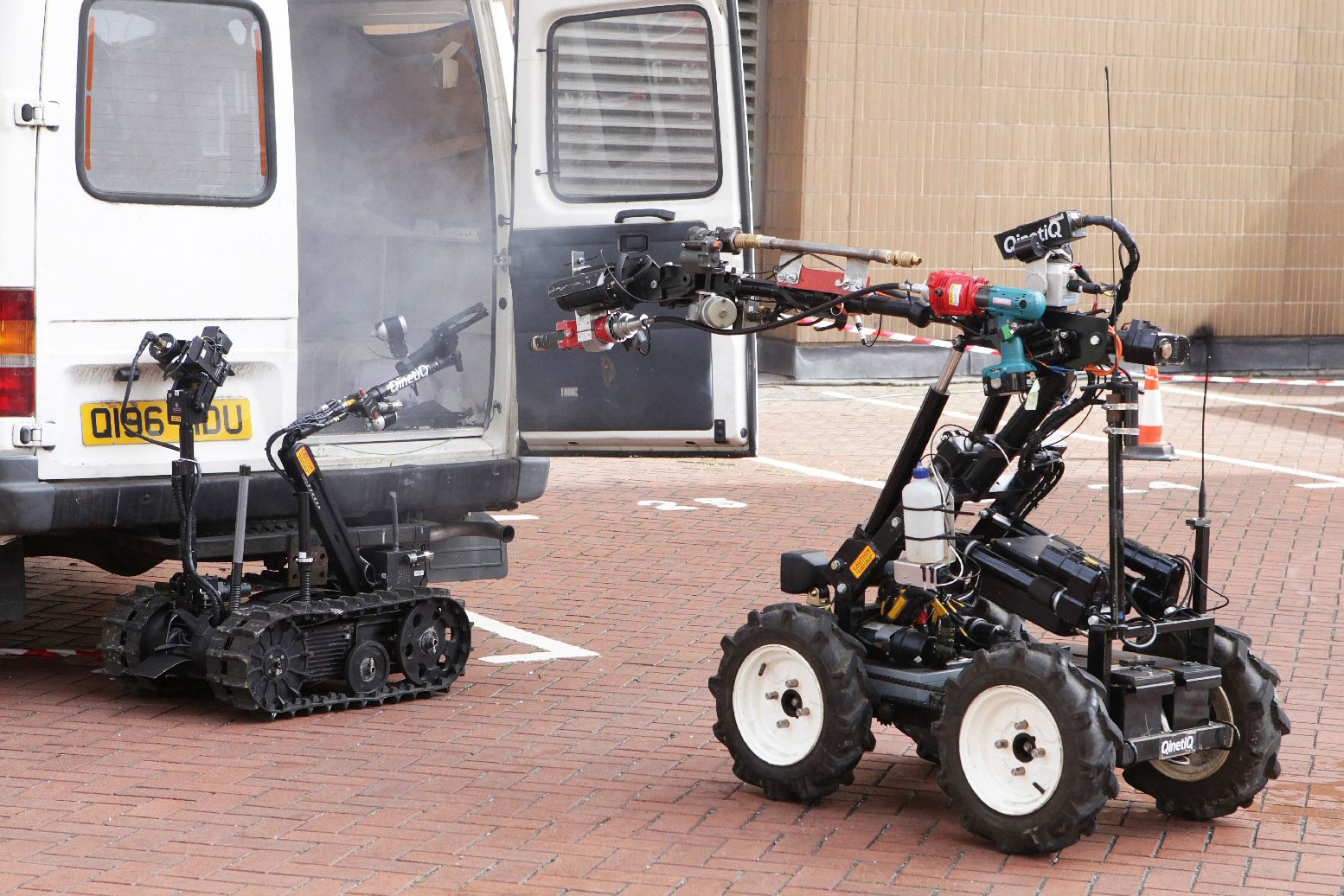
QinetiQ's robotic firefighting team
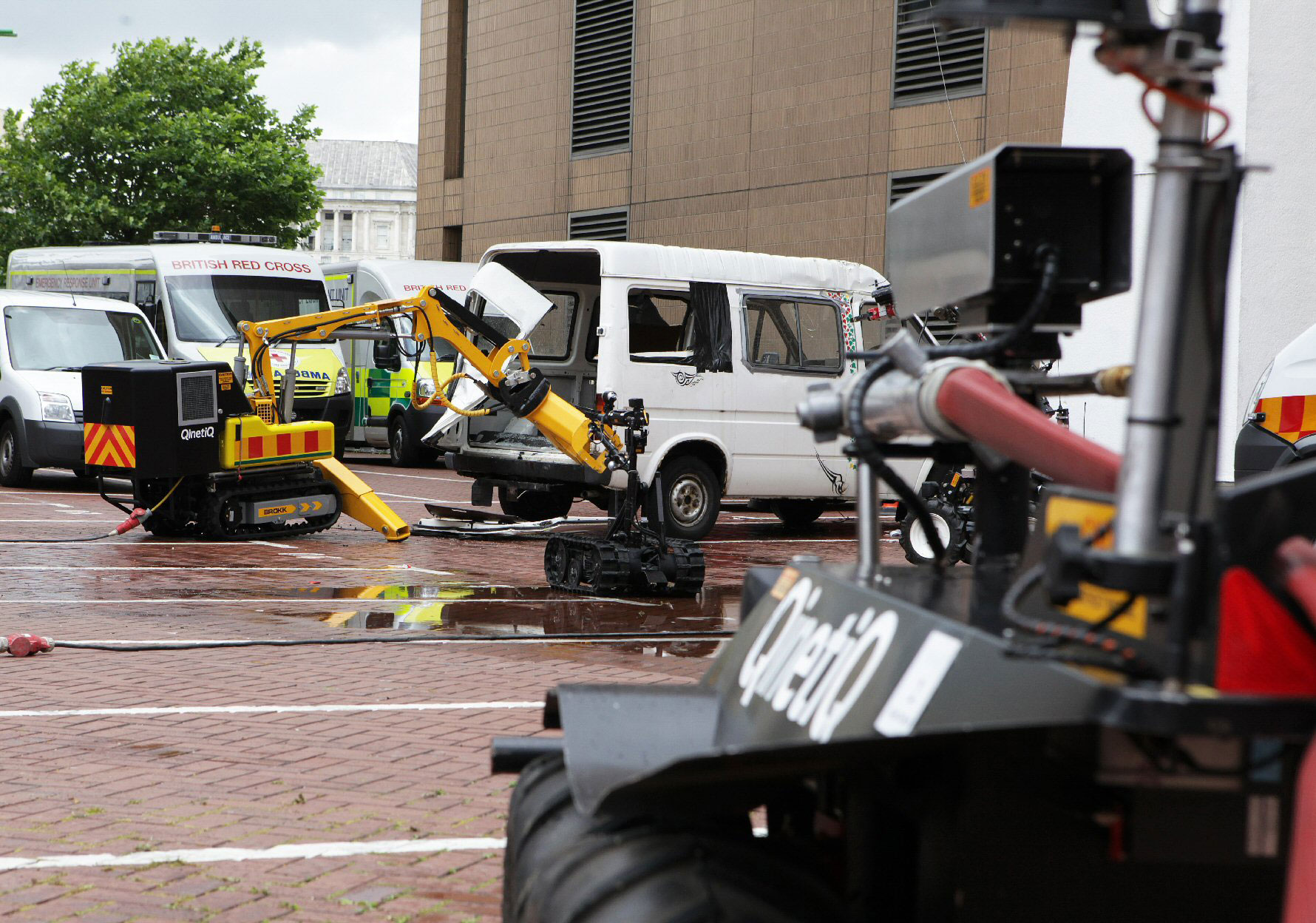
QinetiQ's robotic firefighting team
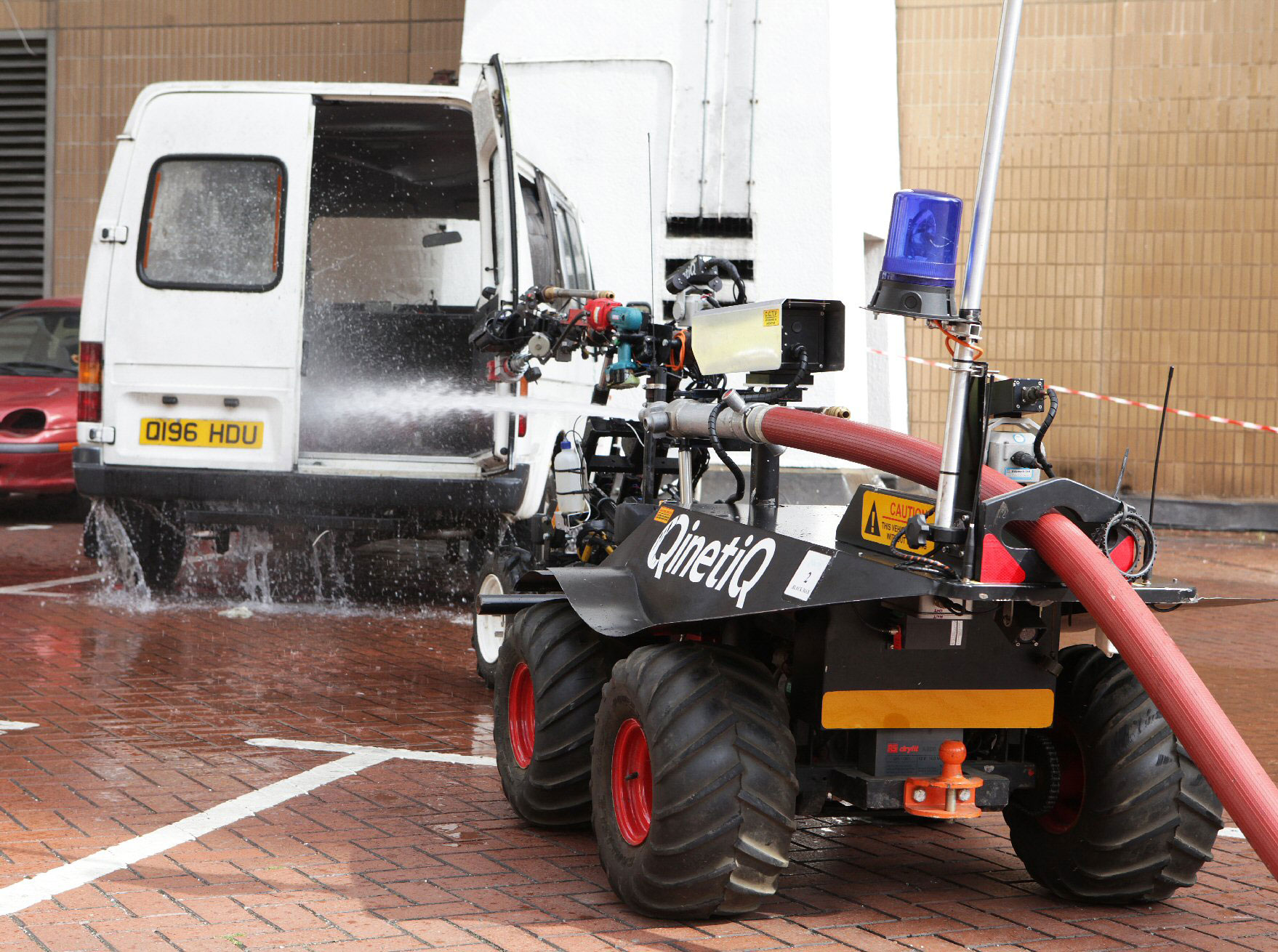
QinetiQ's robotic firefighting team
Firefighting robots were unveiled in London yesterday, as they're set to go to officially go to work helping put out blazes around the capital.
Previously used in wars in Iraq and Afghanistan, the QinetiQ robots have been part of a two-year trial in and around London by the London Fire Brigade and transport groups including Transport for London, Network Rail and the Highways Agency.
There are three types of robot. The first, Talon, is small and easy to control, and features video and thermal imaging. It's previously been used in Iraq for bomb disposal. The second is Black Max, which looks like a quad bike and has a video camera as well as a high-pressure water hose. The Brokk 90 is a mini-digger for moving debris and accessing buildings. Click here for photos.
The robots are especially useful if acetylene gas cylinders are nearby, as the canisters can explode even after the fire is out. Because of this, areas around the cylinders must be shut down for a full 24 hours afterward, disrupting transport.
Now, in such cases, the fire brigade can call QinetiQ to deploy the three "remotely operated vehicles" to canvas the area with their cameras. Using thermal imaging, the robots can check if the canisters are likely to explode.
The machines can also cool cylinders, move debris, and access buildings although there's no word yet how they are at getting cats out of trees.
"When fires break out near the railway they are often in circumstances where there is a suspicion that acetylene gas cylinders may be involved," said Simon Christoforato, QinetiQ's business group manager for robotic systems, in a statement. "In recent years there have been an increasing number of rail line-side fires and acetylene incidents across London, each causing massive disruption to passengers."
Get the ITPro daily newsletter
Sign up today and you will receive a free copy of our Future Focus 2025 report - the leading guidance on AI, cybersecurity and other IT challenges as per 700+ senior executives
Chistoforato said that in 2008, the robots were used at 17 fires, cutting the average time transport was disrupted from over 19 hours to fewer than three hours.
The robots are currently only for use in Greater London, but QinetiQ noted additional funding or simply longer call out times could see the robots roll out across the country.
As well, the Highways Agency is looking to use the robots to access cars. "Roads are regularly affected by major incidents so anything we can do to deal with the problems and reduce delays for commuters is a good thing," said Mark Clark, responsible for Incident Management at the Highways Agency.
A researcher has suggested robots could be policing our streets by 2084, but Intel promises robo-butlers in just ten years. Click here for more on the current state of robotics - and whether it's bad news for us people.
Freelance journalist Nicole Kobie first started writing for ITPro in 2007, with bylines in New Scientist, Wired, PC Pro and many more.
Nicole the author of a book about the history of technology, The Long History of the Future.
-
 Should AI PCs be part of your next hardware refresh?
Should AI PCs be part of your next hardware refresh?AI PCs are fast becoming a business staple and a surefire way to future-proof your business
By Bobby Hellard Published
-
 Westcon-Comstor and Vectra AI launch brace of new channel initiatives
Westcon-Comstor and Vectra AI launch brace of new channel initiativesNews Westcon-Comstor and Vectra AI have announced the launch of two new channel growth initiatives focused on the managed security service provider (MSSP) space and AWS Marketplace.
By Daniel Todd Published
-
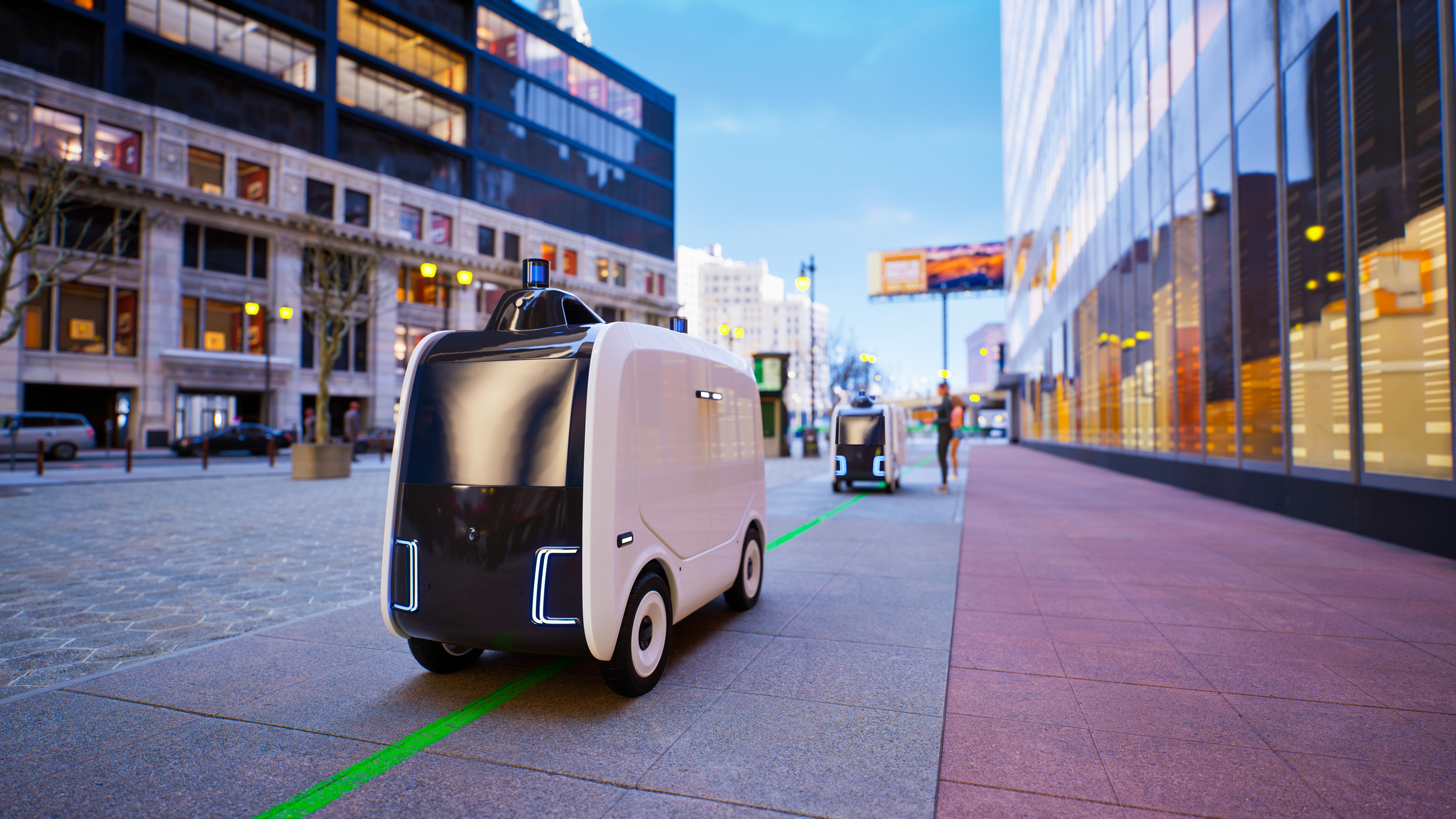 ‘Not if, but when’: Where are the autonomous robots?
‘Not if, but when’: Where are the autonomous robots?In-depth Robots are already common in manufacturing, but where are the autonomous robots of the future and what form will they take?
By Steve Ranger Published
-
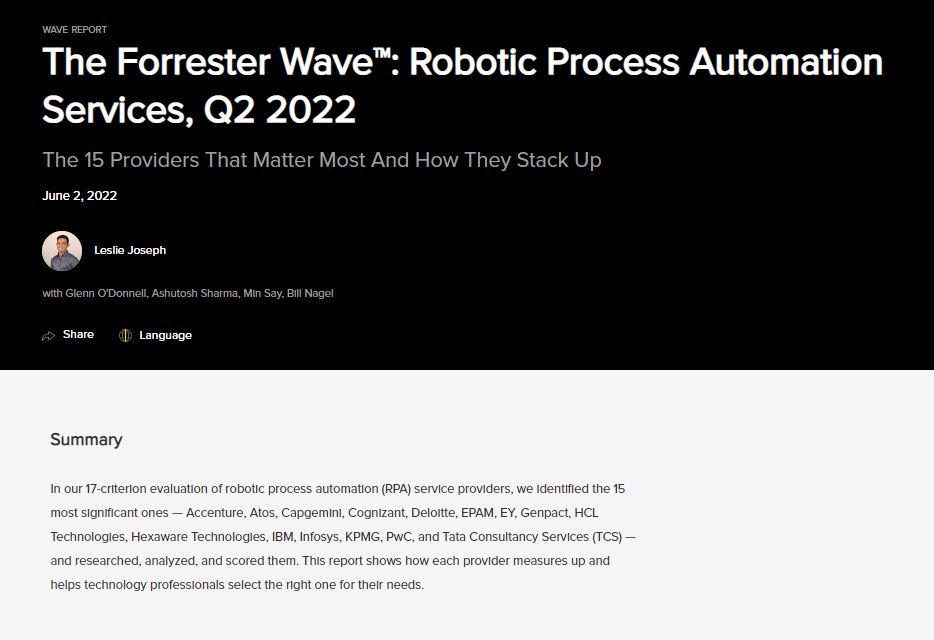 The Forrester Wave™: Robotic Process Automation Services
The Forrester Wave™: Robotic Process Automation ServicesWhitepaper The 15 providers that matter most and how they stack up
By ITPro Published
-
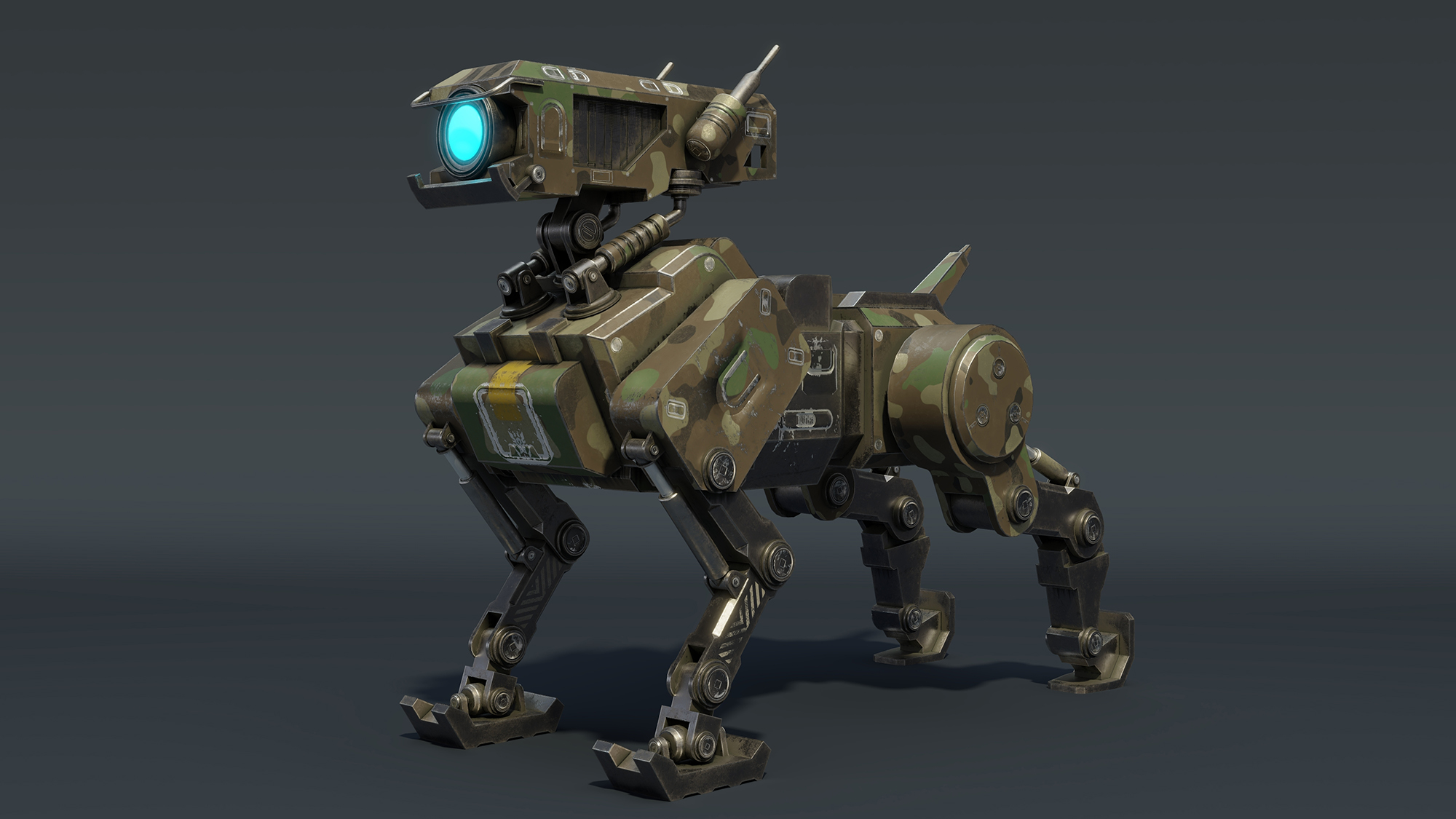 MOV.AI’s robotics engine platform aids AMR production
MOV.AI’s robotics engine platform aids AMR productionNews New platform automates autonomous mobile robot development with visual IDE, open API framework, 3D physics simulator, and more
By Praharsha Anand Published
-
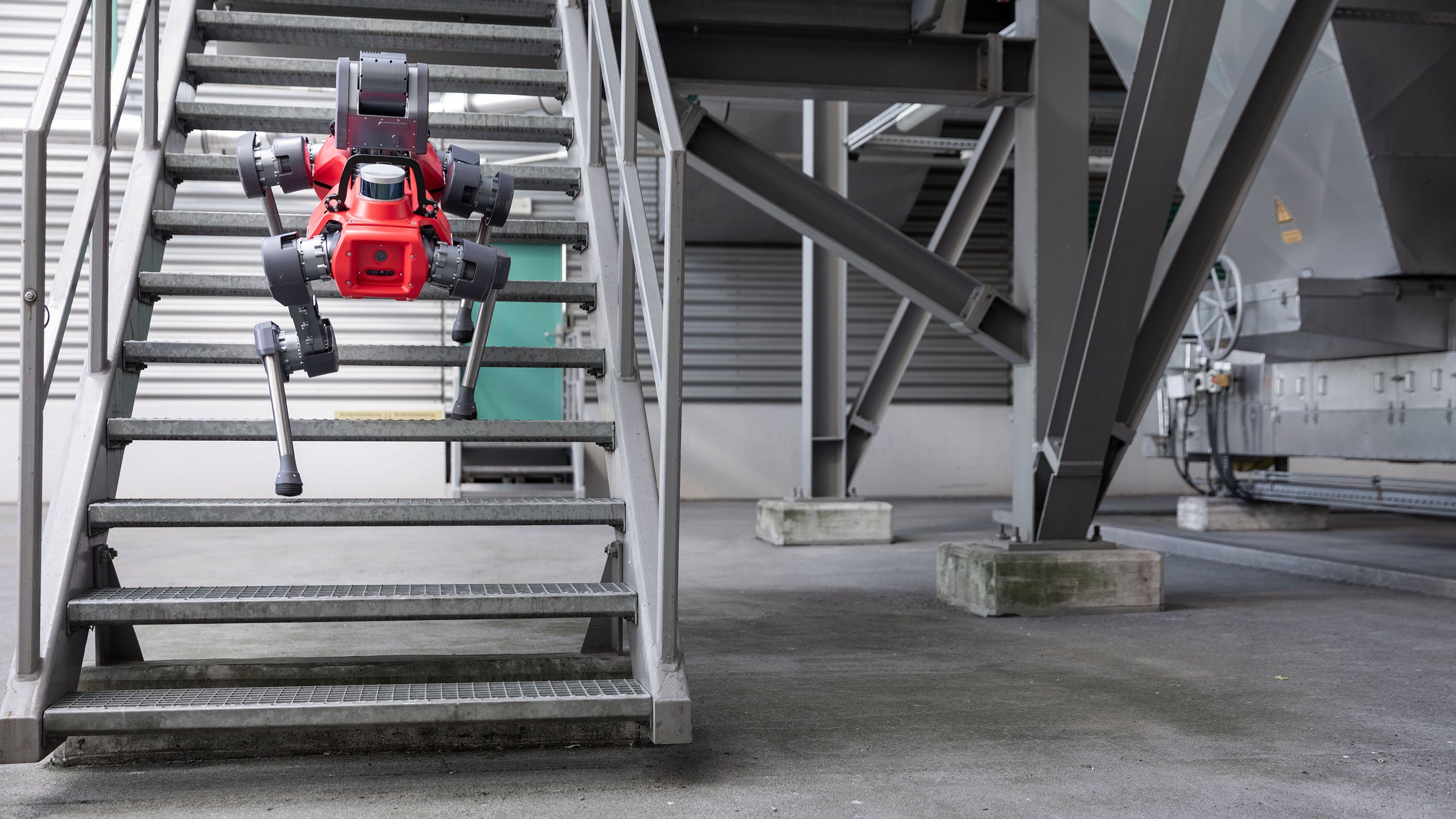 ANYbotics taps Velodyne to enhance autonomous robots’ navigation
ANYbotics taps Velodyne to enhance autonomous robots’ navigationNews ANYbotics will incorporate Velodyne’s Puck Lidar sensors into its mobile robots
By Praharsha Anand Published
-
 Infostretch and Automation Anywhere join forces to deliver hyperautomation
Infostretch and Automation Anywhere join forces to deliver hyperautomationNews New deal will help organizations establish RPA centers of excellence
By Praharsha Anand Published
-
 Telepresence medical robot market set to reach $159.5 million by 2028
Telepresence medical robot market set to reach $159.5 million by 2028News Increasing adoption of robots in health care settings and product innovations are contributing to the market's growth
By Rene Millman Published
-
 Boston Dynamics announces commercial sales of Spot Robot
Boston Dynamics announces commercial sales of Spot RobotNews Boston Dynamics launches its first online sales offering with Spot Robot
By Sarah Brennan Published
-
 Changing the Games: Why Tokyo 2020 will be the most technologically advanced Olympics yet
Changing the Games: Why Tokyo 2020 will be the most technologically advanced Olympics yetIn-depth Japan is hoping to amaze athletes and fans alike at the upcoming Tokyo 2020 Olympics, with a host of cutting-edge innovations. Can it deliver on its promise?
By Lindsay James Published